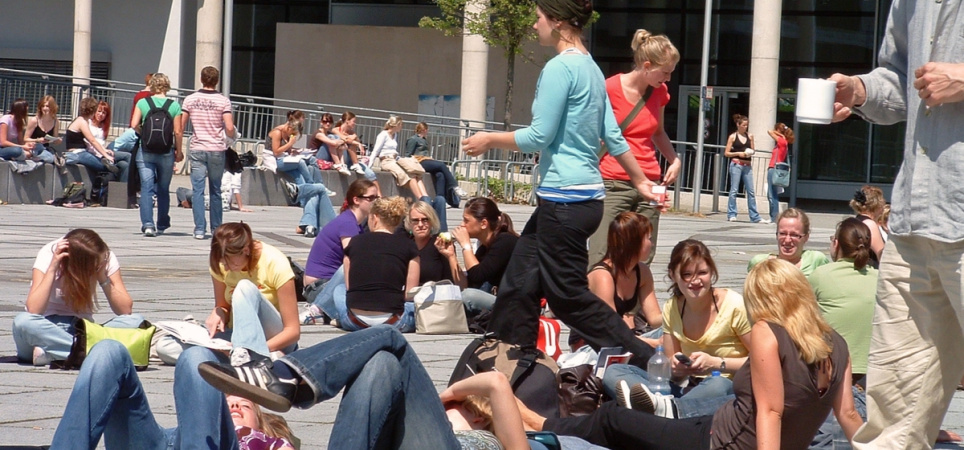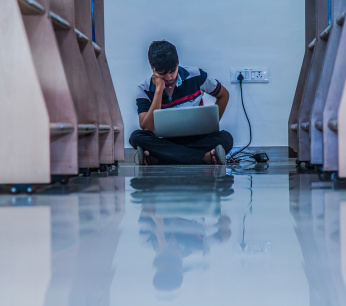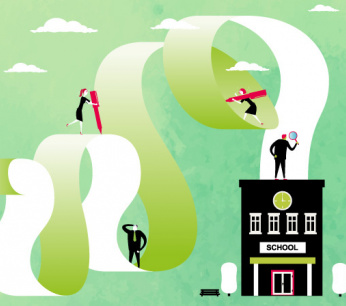Ministry misjudged the number of students for years
A structural error in estimating the number of students caused a lot of hassle around the education budget for years. The number of students in higher education, in particular, was predicted too low as standard.

Image: Max Braun - \x3ca href=\"https://www.flickr.com/photos/maxbraun/144222561\" target=\"_blank\" rel=\"noopener\"\x3eFlickr\x3c/a\x3e
The ministry calls it 'a one-off break in trend'. And a 'methodological adjustment'. Every year, the ministry predicts how many pupils and students are expected in the coming years. These are important numbers, because the education budget is based on them.
Who deeper in the Reference forecast 2021 dives, reads that the method contained an error as a result of which student numbers, but especially student numbers, were systematically underestimated. This error has now been rectified and weighs heavily in the expected numbers of students for MBO, HBO and WO.
Higher education in particular was hit by the mistake (read at the bottom of this message: 'Double the scarf'). In the longer term - and on average across all education sectors - correcting the estimation method results in approximately 2,2 percent more expected pupils and students, according to the ministry's mathematicians. This is almost 1 billion euros on the total education budget.
| Number of pupils/students | Actual in 2020 | Expected before 2022 | Expected before 2027 |
| po | 1491900 | 1468800 | 1440000 |
| vo | 937200 | 934700 | 904700 |
| mbo | 506100 | 491600 | 470100 |
| hbo | 488500 | 504600 | 489800 |
| wo | 329000 | 355900 | 395600 |
Source: Reference projection 2021 – OCW, the error has been corrected in these figures
In 2018, Education Ministers Arie Slob and Ingrid van Engelshoven did another Exploring the system around the OCW estimates. This states that since 2013 there are relatively often more pupils and students than expected. In the same letter, the ministers state that they do not believe that the accuracy of the estimates can be 'substantially improved'. Nevertheless, OCW officials tracked down the error themselves. About a year and a half ago, an OCW spokesperson said. After an investigation and on the advice of an independent committee, the ministry adjusted the estimation system.
Underestimations make you lag behind every year
It is 'adding seizure to injury to' responds Douwe van der Zweep, daily driver for the AOb. “Estimates that are too low mean that you fall behind the facts every year and then you have to wait and see whether the cabinet wants to adjust afterwards.” Paul Hellings is a finance policy officer for the AOb: “If the costs for pupils or students in the current financial year turn out to be higher than estimated, the Ministry of Education, Culture and Science - just as exaggerated - has to get to work and fight that amount with the Minister of Finance. It is the annual struggle to cover the education deficit from the general budget. Sometimes that partially works, but more often it doesn't. Then it must come from your own budget.”
According to van der Zweep, the funding*The Association of Dutch Universities already calculated that the government grant per student has fallen by about a quarter since 2000. According to the AOb the scientific education & research (wo&o) sector needs 1,5 billion annually to get funding back in order. PricewaterhouseCoopers' Strategy& consultancy came up with an investigation in March this year. This agency amounts to a structural 800 million extra for wo&o, plus a one-off catch-up effort of 300 million euros. for at least higher education in order as soon as possible. “The principle is very simple: more students should simply mean more money.” Most of that happened last year. From 2020, an additional 510 million euros appeared to be needed to cover the costs for the actual number of pupils and students. The bulk of that amount, 450 million euros, came from general funds: a unique event. 60 million was found within the education budget. By using the margin from the previous year, by using money from pots that had not run out and by cutting back on subsidies and assignments.
Last February, the government also made a structural contribution of 645 million euros to compensate for the increasing student and pupil numbers in the current year. At that time, the growth in the number of students in HBO and WO was mainly linked to corona.
Loose screws
The pandemic makes the OCW budget even more sensitive to corrections afterwards. What students and students will do next year is more difficult to predict due to corona. 'In the 2019-2020 school year, fewer students remained in secondary education and more MBO graduates started further education than in previous years', says the estimate report.
The estimate of how many children will soon go to primary school is also on a somewhat looser screw. The ministry uses forecasts from Statistics Netherlands (CBS) for this. The ministry expects a temporary dip in the number of births in the Netherlands. Corona also means fewer immigrants, which are usually people 'of childbearing age'. OCW writes in the estimate report: 'A lower migration balance therefore leads to a lower birth rate, which in turn also leads to fewer young children in a few years' time.'
Double the scarf
It's not hidden, but it's hard to understand. The already voluminous report that the ministry publishes annually with estimates of pupil and student numbers has an extra chapter this year on what the Ministry of Education calls an 'improved method'.
The bottom line is that pupils/students who are expected to emigrate or die, were double fed into the system. The group 'death or emigrate' was already part of the category 'no education' in the source data of the Education Executive Agency, but was once again placed outside education on the basis of CBS forecast figures on death and emigration. This doubling has been in place since 1995, OCW said in a response.
Primary education noticed the least of this. Almost one hundred percent of children of primary school age attend school in one way or another. It is only later in the education chain, particularly in secondary vocational education, higher professional education and university education, that the modeling error becomes more drastic due to a cumulative effect.
The modified calculation method will yield 2,7 percent more students in MBO in five years than if it had been estimated further on the basis of the old method. In the same year, 2026, after correction, 7,6 percent more students will populate higher professional education. Scientific education takes the cake with no less than 10 percent more expected students in 2026. At least, if only the modeling error is solved.
Other factors are not included in these growth percentages. Think of corona, but there are many more topics that influence the estimate. That is why the final estimate is lower. A slight decrease is even forecast for MBO. This does not alter the fact that if the error had not been corrected, the estimates for MBO, HBO and WO in particular would have been considerably lower.
Also read: 'Growth urge undermines higher education'


